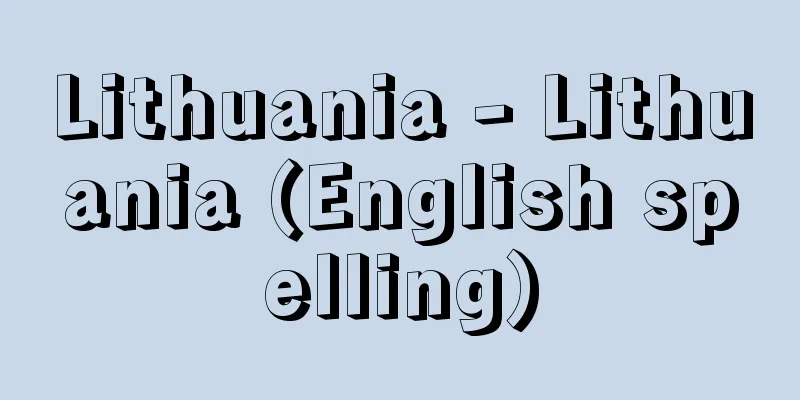Seiichi Touhata

|
Agricultural economist. Born in Mie Prefecture. He studied agricultural economics at the Faculty of Agriculture of Tokyo Imperial University, graduating in 1922 (Taisho 11). After graduate school, he became an associate professor at the same faculty in 1924 and a professor in 1933 (Showa 8). During this time, he studied in the United States and Germany from 1951 to 1954, and studied under J. A. Schumpeter at the University of Bonn. He was mainly active in the academic field until the end of World War II, producing works such as The Development Process of Japanese Agriculture (1936), which provided a unique explanation of Japanese capitalism and agricultural issues based on Schumpeter's theories of innovation and entrepreneurship. After the war, he held important positions in many research institutes and policy-related committees, including director of the National Agricultural Research Institute (1946-1956), director of the Institute of Developing Economies (1960-1968), and chairman of the Tax System Research Council (1965-1974), and had a great influence on postwar Japanese society in many areas. He became a member of the Academy of Sciences in 1964 (Showa 39), and was awarded the Order of Culture in 1980. [Tadashi Hayasaka] "Tohata Seiichi, 'Collection of Masterpieces of Agricultural Administration and Economics in the Early Showa Period 3: The Development Process of Japanese Agriculture' (1978, Rural Culture Association)" ▽ "Tohata Seiichi, 'My Resume' (1979, Nihon Keizai Shimbun)" ▽ "Tohata Seiichi, 'Tohata Seiichi: My Teacher, My Friend, My Scholarship' (1984, Kashiwa Shobo)" ▽ "The Footsteps of Professor Tohata Seiichi, compiled and published by the Joint Funeral Executive Committee of the Late Professor Tohata Seiichi (1984)" Source: Shogakukan Encyclopedia Nipponica About Encyclopedia Nipponica Information | Legend |
|
農業経済学者。三重県に生まれる。東京帝国大学農学部で農業経済学を学び、1922年(大正11)卒業後、大学院を経て、24年同学部助教授、33年(昭和8)教授。この間26~29年にアメリカ、ドイツに留学し、ボン大学でJ・A・シュンペーターに師事した。シュンペーターの革新論や企業者論を中軸に日本の資本主義や農業問題に独自の解明を行った『日本農業の展開過程』(1936)などで第二次世界大戦の終結まではおもに学究面で活躍したが、戦後は農業総合研究所所長(1946~56)、アジア経済研究所所長(1960~68)、税制調査会会長(1965~74)など多くの調査研究機関、政策関係委員会の要職を歴任し、戦後の日本社会に多方面で大きな影響を与えた。64年(昭和39)学士院会員、80年文化勲章受章。 [早坂 忠] 『東畑精一著『昭和前期農政経済名著集3 日本農業の展開過程』(1978・農山漁村文化協会)』▽『東畑精一著『私の履歴書』(1979・日本経済新聞社)』▽『東畑精一著『東畑精一 わが師わが友わが学問』(1984・柏書房)』▽『故東畑精一先生合同葬実行委員会編・刊『東畑精一先生の足跡』(1984)』 出典 小学館 日本大百科全書(ニッポニカ)日本大百科全書(ニッポニカ)について 情報 | 凡例 |
Recommend
Amazonomakia - Amazonomakia
...The first decorative sculpture group (448-443 ...
Pueblo Culture
A prehistoric culture that developed following th...
al-Amra (English spelling) alAmra
…Egyptian Predynastic culture (the period when bo...
Instruments for aircraft
A general term for instruments installed on aircr...
Equilibrium line
The equilibrium line is the long-term average pos...
Specular reflection
A technique used in 3D graphics software to create...
《Nemināhacariu》(English spelling)
...In terms of phonological and morphological cha...
Kimobetsu mine
…It is often found as a secondary mineral of arse...
Garamasadon - Garamasadon
...He gained attention with "The Mischievous...
Loon family
A family of birds in the order Loon. The only fami...
Ceiling - Tenjo (English spelling) ceiling
The part that divides the upper part of a buildin...
Rheum palmatum (English name) Rheumpalmatum
… [Hiroshi Wakamatsu]. … *Some of the terminology...
superimposed title
...Originally a term in photography, it is a meth...
Mongolian spot - Mōkohan (English spelling)
What is the disease? Japanese (yellow race) butto...
Palace language - Kyūshi (English)
A type of Chinese poem. In the form of a seven-cha...









